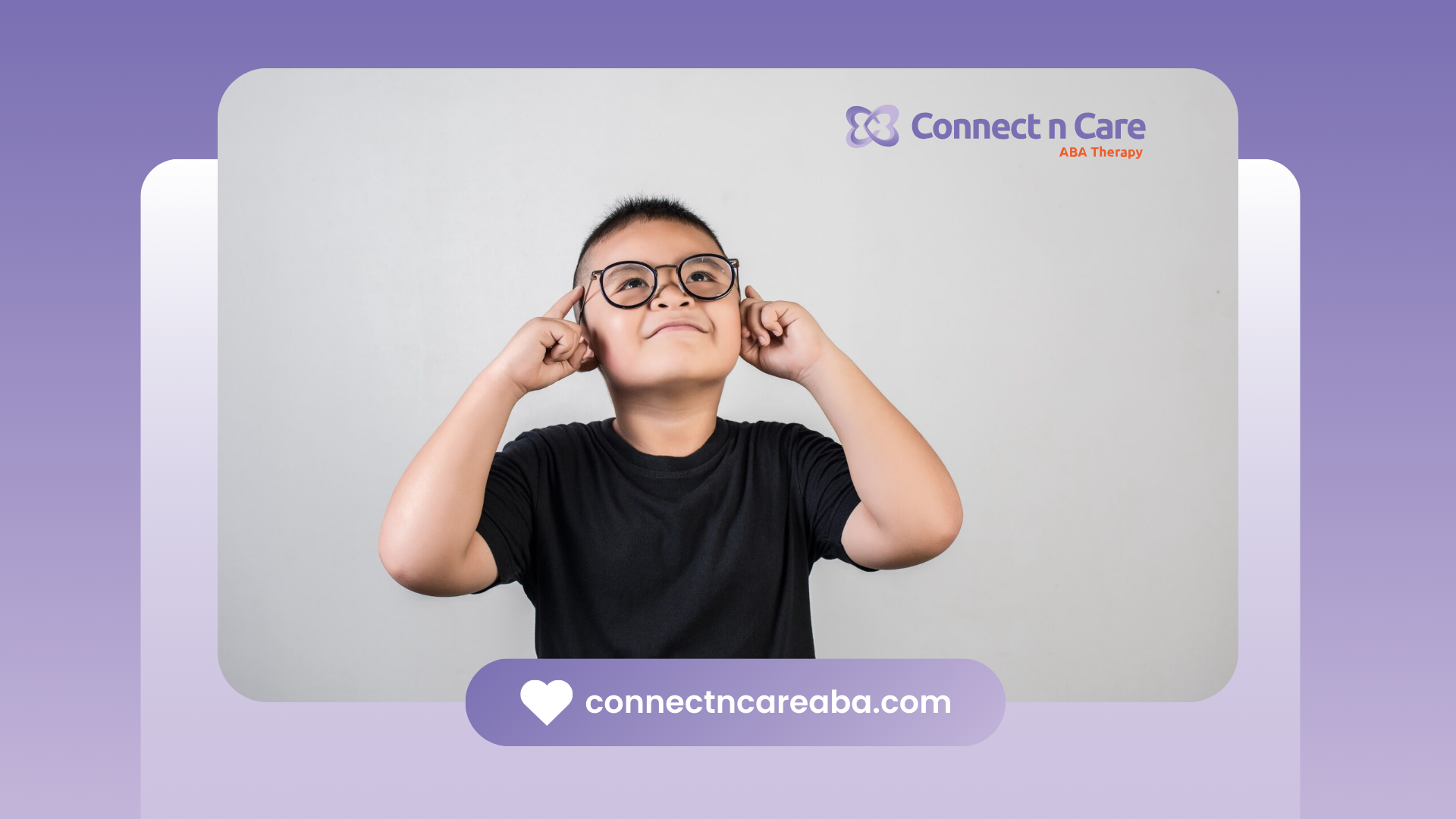This blog post looks into how sensitivity affects people with autism spectrum disorder (ASD). We will talk about the challenges autistic people face in a world designed for neurotypical individuals. By learning about how autism and sensory processing connect, we can create more empathy, acceptance, and better support for autistic individuals.
Understanding the Spectrum: Autism and Sensitivity
Autism is different for everyone. Each person has their own strengths and challenges. Many autistic individuals share a common trait: they are often very sensitive to their environment. This sensitivity can show up in different ways. Some may react strongly to sounds or lights, while others may feel intense emotions. This can change how they see and relate to the world around them.
Knowing more about this sensitivity is important. It helps to provide better support and encourages good interactions.
Defining Autism Spectrum Disorder (ASD)
Autism Spectrum Disorder (ASD) includes many conditions. People with ASD often face issues with social skills and can show repetitive behaviors. They may also experience sensory sensitivities. Autistic individuals might find it hard to understand the emotions of others. They may struggle to maintain eye contact or interpret nonverbal communication. Sensory processing can be different for them. Some may be very sensitive to certain sounds, lights, or textures, while others may not feel those things as much. These sensory differences can affect how autistic individuals engage with their surroundings. They may need special coping strategies and accommodations to fit into everyday environments.
The Role of Sensory Sensitivity in Autism
Sensory sensitivity is a key feature of autism. It changes how autistic individuals feel and respond to their senses. For some people, this means they are hypersensitive. Loud noises or bright lights can be too much for them and cause stress. On the other hand, hyposensitivity happens when a person doesn’t react enough to sensory input. This makes them want more intense sensory experiences.
These sensory sensitivities affect everyday life. They play a big role in what food a person likes, what clothes they wear, how they interact with others, and how they manage their emotions. It is important to remember that sensory experiences are personal and can differ a lot among autistic individuals. Understanding these differences in sensory processing helps us create better environments. This can reduce sensory overload and support their well-being.
Unraveling Sensory Sensitivity in Individuals with Autism
The sensory experiences of autistic individuals can vary a lot. Some may be hypersensitive, while others may be hyposensitive. Each person has their own triggers and responses. It is very important to recognize and understand these differences. This helps us give the right support and promote positive interactions.
Hypersensitivity vs. Hyposensitivity: Navigating the Extremes
Hypersensitivity is when a person has a stronger than normal reaction to sensory input. This often happens in people with sensory processing disorder. They may feel very overwhelmed in everyday environments, like when exposed to crowded places or loud noises. This can cause sensory overload. As a result, they might experience anxiety, have meltdowns, or choose to withdraw to cope.
On the other hand, hyposensitivity means a person does not respond much to sensory experiences. They may tolerate pain better or seek out strong sensory experiences. They might also have trouble noticing small sensory cues. It's important to understand these two sides. With awareness and support, we can help reduce sensory challenges and improve well-being.
The Impact of Sensory Processing Challenges on Daily Life
Sensory processing challenges can have a big effect on the daily lives of autistic individuals. Simple things, like grocery shopping or going to social events, can feel very hard because of too much sensory stimulation, like bright lights, loud sounds, or social interaction. These issues can also happen at home. Certain textures, smells, or sounds may cause discomfort or stress.
It is important to manage sensory input in everyday environments for autistic individuals to do well. Making spaces that are friendly to the senses, with less noise, adjustable lighting, and calming tools, can really help reduce anxiety. This creates a sense of comfort and control. When we understand how sensory processing challenges affect daily life, we can help our individuals, families, and communities build more supportive and inclusive environments.
Emotional Sensitivity and Autism
Emotional sensitivity is a complex part of autism. It greatly influences how people understand and react to emotions, including their own and others'. This sensitivity can make them more aware of feelings. It also leads to strong emotional experiences and can create difficulties in managing emotions.
The Emotional Landscape of Autism
Autistic individuals often feel a wide and deep range of emotions. They may find it hard to understand the emotions of others. Yet, they can experience joy, sadness, or anxiety very intensely, even from seemingly insignificant events.
Some autistic individuals might have alexithymia. This means they have trouble identifying and naming their own emotions. To help them with their feelings, we need to be patient, understanding, and open to learning about their unique emotional experiences.
Strategies for Managing Intense Emotions
Managing strong feelings is really important for autistic individuals. It helps them feel more confident and better in life. Cognitive behavioral therapy (CBT) is a great way to help them understand and control their emotions. CBT gives tools to deal with anxiety, stress, and strong feelings.
Making a sensory toolbox can also help. You can fill it with calming things, like weighted blankets, noise-canceling headphones, or fidget toys. These items can help when someone feels overwhelmed. Having a good support system, with caring family members, therapists, and mentors, is also very important for getting emotional support and advice.
Navigating Social Dynamics: Autism and Sensory Sensitivity
Social interactions can be tough for people with autism. This is often made harder by sensory sensitivities. Many struggle to understand social cues and have trouble with nonverbal communication. Being in busy social places can cause sensory overload, which can lead to feelings of anxiety and being worn out.
It is very important to understand these challenges. This understanding helps create more positive social interactions and encourages inclusivity.
Challenges in Social Interactions for Those on the Spectrum
Autistic individuals can have a hard time with social interactions. This is because they process social information differently and have sensory sensitivities. They might struggle with eye contact, reading facial expressions, and understanding nonverbal communication. This can create misunderstandings and lead to discomfort in social settings.
Sensory overload from loud noises, bright lights, or crowded places can make these challenges even worse. This can make getting involved in social situations feel very overwhelming and tiring.
These social issues do not mean that autistic individuals do not want to connect with others. Rather, they just perceive and process social cues in a different way.
Building Meaningful Connections: Tips and Strategies
Building meaningful connections is very important for everyone, including people with autism. Encouraging social interaction through planned social skills training can help give individuals the tools they need. This helps them handle social situations better. It is good to focus on teaching social cues, starting conversations, and understanding nonverbal communication.
Creating chances for social interaction in friendly environments can also help. For example, small group settings with regular routines or one-on-one playdates can reduce sensory overload. This way, people can have better social experiences.
The Intersection of Autism, Sensitivity, and Intelligence
It is important to understand that autism, sensitivity, and intelligence can all exist together. Autistic individuals are a diverse group with many different levels of intelligence. We need to fight against false beliefs that say autism means someone is not smart.
Debunking Myths: High Sensitivity and High Functioning Autism
One common misunderstanding is linking high sensitivity only with "high functioning autism." This term is not used anymore in autism diagnoses. This view can be confusing and can cause harmful stereotypes. Sensitivity, both sensory and emotional, can be found in all people on the autism spectrum. It does not show how smart someone is.
Autistic individuals can show great talents and intelligence, no matter where they are on the spectrum. It is important to know and value the different strengths of autistic people. We should create a space that is inclusive and respectful of neurodiversity.
Recognizing and Supporting Giftedness in Autism
Autistic individuals often have special strengths and talents. If these are supported and nurtured, they can achieve great things. Their strong focus, attention to detail, and ability to learn a lot about their interests can lead to impressive skills in areas like math, science, music, and the arts.
It is important to recognize and support these gifts. Changes in education, like providing quiet places for focused work or allowing different ways to show knowledge, can help autistic students do well in school. Accepting neurodiversity and valuing the unique strengths of autistic individuals can benefit everyone in society.
Coping Mechanisms and Support Strategies
Developing good ways to cope and offering complete support is very important. This helps autistic individuals handle sensory overload, control their emotions, and deal with social situations more confidently.
Practical Tips for Managing Sensory Overload
Managing sensory overload is an important task for many autistic individuals. Having good ways to cope can greatly improve their health and happiness. Making a sensory toolbox can help. This toolbox can include things like noise-canceling headphones, weighted blankets, and fidget toys. These items can give comfort and help with sensory balance right away.
It's also important to identify and talk about sensory triggers. This understanding can help avoid and lessen times of sensory overload.
Making changes to the environment can also help. Dimming bright lights, using soft lighting, reducing background noise, and having quiet spaces are good accommodations that can make a difference.
Emotional Support and Therapy Options
Emotional support is very important for autistic individuals. They often deal with stronger emotional sensitivity, anxiety, and difficulties in managing their emotions. Therapy like cognitive behavioral therapy (CBT) can help. It provides tools and strategies for them to recognize, understand, and control their emotions better.
Having a strong support system is key. This should include family, friends, therapists, and support groups who understand their needs. It’s very important to create a safe and welcoming space. This lets people with autism share their feelings openly without fear of judgment.
Sensory sensitivities are a common experience for individuals with autism, and finding the right support is crucial. If you're searching for ABA services near me, local providers specialize in sensory integration techniques that can help manage these sensitivities. Reach out today to explore how personalized ABA therapy can improve your loved one's daily experiences and promote a greater sense of comfort.
Advancements in Research and Understanding
Advancements in autism research help us understand how autism affects sensitivity. Ongoing studies look at how the brain processes different sensory information and why people with autism may have emotional sensitivities and social challenges.
This research is important for creating specific support methods and gaining a better understanding of what it is like to be autistic.
Recent Studies on Autism and Sensory Sensitivity
Recent studies have provided valuable insights into the neurological basis of sensory sensitivity in autism. Neuroimaging studies have revealed differences in brain activity patterns during sensory processing tasks between autistic and neurotypical individuals, suggesting differences in how sensory information is processed and integrated.
| Study | Key Findings |
|---|---|
| Brain Imaging Study (2023) | Revealed differences in brain activity patterns in the sensory cortex, amygdala, and prefrontal cortex during sensory processing tasks. |
| Sensory Processing Study (2022) | Identified variations in sensory thresholds and sensory reactivity in autistic individuals, suggesting a spectrum of sensory experiences. |
These advancements contribute to a more nuanced understanding of sensory sensitivities in autism, paving the way for tailored interventions and support.
Future Directions in Autism Research
Future studies on autism are looking at how genes, brain growth, and the environment all work together in shaping the autism spectrum. One exciting area of research is creating personalized care plans. These plans will be based on each person’s specific sensory needs, how they manage emotions, and their way of communicating socially.
Also, work on better tools for diagnosing autism and finding early signs is very important. Early action can lead to better outcomes. Ongoing research is essential for understanding autism's complexities, encouraging acceptance, and improving the lives of autistic individuals and their families.
Conclusion
In summary, the connection between sensitivity and autism helps us understand how sensory experiences affect autism spectrum disorder. It’s important to know the differences between hypersensitivity and hyposensitivity to handle everyday challenges. We should recognize how sensory processing issues can affect emotional health and social life. By clearing up misconceptions and using helpful strategies, we can create a friendlier environment for people on the spectrum. Finding ways to cope, providing emotional support, and new research can lead to better understanding and support methods. Together, we can work to improve life quality for those with autism and sensitivity.
Connect n Care ABA is North Carolina’s trusted leader in providing personalized ABA therapy for individuals with heightened sensitivity often found in autism. Their expert team uses evidence-based techniques to address sensory sensitivities, helping children and adults navigate overwhelming experiences. If you're looking for effective strategies to manage sensory challenges, contact Connect n Care today and discover how their tailored therapy programs can enhance your loved one's comfort and well-being.
Frequently Asked Questions
Can someone with autism also be considered highly sensitive?
Yes, people with autism can be very sensitive. They might also have hyposensitivity. Autism and sensory processing sensitivity are different, but they can overlap. This overlap can create special experiences of the world.
How does sensory sensitivity affect individuals with autism?
Sensory sensitivity can greatly affect the daily lives of people with autism. It can lead to discomfort, overload, and anxiety in everyday environments. This happens because they have stronger or weaker responses to sensory experiences.
What are some signs of sensory processing issues in autism?
Signs of sensory processing issues in autism can be different, but they may include:
- Negative responses to loud noises, bright lights, or specific textures.
- Doing repetitive behaviors to get sensory input.









